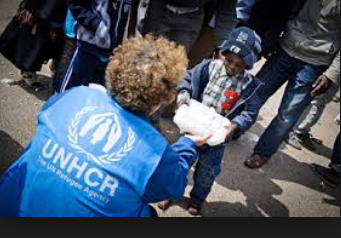As Europe responds to the problem of dangerous mixed migration flows across the Mediterranean, the UN refugee agency and its partners have been assisting hundreds of people in Libya rescued at sea or intercepted by the coastguard.
UNHCR has been able to help some of the 1,242 people picked up in Libyan waters and mostly taken to immigration detention centres since mid-April. A series of deadly capsizings since mid-April has focused global attention on the risks refugees and migrants are willing to take to reach Europe.
Those taken to detention centres in Libya include a group of more than 200 people from the Horn of Africa intercepted at Tajura (16 kilometres east of Tripoli). Four of them, including a two-year-old boy and his mother, had serious burn injuries caused by an exploding gas cylinder before they set off to cross to Europe on a smuggler's boat.
"UNHCR is aware of at least 2,663 migrants or asylum-seekers (including women and children) spread across eight immigration detention facilities across Libya run by the Department for Combatting Illegal Migration (DCIM) – a significant increase from the 1,455 people in detention a month ago," spokesperson Ariane Rummery said Tuesday.
"The main nationalities in the centres are Somalis, Eritreans, Ethiopians and Sudanese as well as people from various West African countries. UNHCR understands that 15 immigration centres are now operational across the country," she told journalists in Geneva.
Foreigners in Libya can be arrested for lack of lawful immigration status and can spend anything from one week to 12 months in detention. "UNHCR can generally organize the release of refugees and asylum-seekers registered with our office within a few days, although our capacity to register new arrivals to Libya is limited in the current security environment. We also advocate for the release of very vulnerable people, like pregnant women, and also for alternatives to detention, if possible," Ariane explained.





